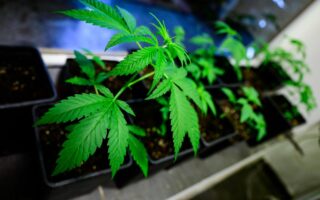In the ever-evolving landscape of wellness and alternative therapies, CBD cannabinoids have emerged as a focal point of both curiosity and debate. As more individuals seek holistic solutions to promote health and well-being, the intricate world of cannabinoids—compounds found in the cannabis plant—beckons with promises of relief, relaxation, and rejuvenation. Among these compounds, cannabidiol (CBD) stands out, capturing the attention of scientists, consumers, and industry pioneers alike. This article delves into the multifaceted realm of CBD cannabinoids, exploring their origins, potential benefits, and the science that underpins their growing popularity. Join us on a journey through this captivating subject, where we’ll separate fact from fiction and uncover the true potential of these powerful plant compounds.
Table of Contents
- Exploring the Therapeutic Potential of CBD Cannabinoids
- Understanding the Different Types of Cannabinoids and Their Effects
- Navigating the Legal Landscape of CBD Products
- Choosing the Right CBD Product for Your Needs
- Q&A
- The Conclusion
Exploring the Therapeutic Potential of CBD Cannabinoids
The fascination surrounding CBD cannabinoids is largely attributed to their wide-ranging effects on both the body and mind. As research progresses, an increasing number of studies reveal promising results indicating that these compounds can aid in treating various conditions. CBD, or cannabidiol, stands out for its ability to interact with the body’s endocannabinoid system, promoting balance and homeostasis. Some potential benefits include:
- Reduction of anxiety and depression: CBD has been shown to exert anxiolytic effects, providing users with a sense of calm without the psychoactive effects associated with THC.
- Alleviation of chronic pain: Many individuals have reported relief from conditions like arthritis and neuropathic pain, making CBD a viable option for pain management.
- Neuroprotective properties: Preliminary studies suggest that CBD may help protect the brain from neurodegenerative diseases, potentially offering therapeutic avenues for conditions such as Alzheimer’s and multiple sclerosis.
Despite the potential, the journey to understanding these cannabinoids is still ongoing, with each new study adding layers of complexity to our understanding of their therapeutic roles. As the scientific community continues to explore their effects, the importance of rigorous testing and regulation becomes apparent. For instance, a summary of key findings from pivotal studies may include:
| Study Focus | Findings |
|---|---|
| Anxiety Reduction | Significant decrease in anxiety levels after CBD administration in clinical settings. |
| Pain Relief | 80% of participants reported improved pain management with consistent CBD use. |
| Neurological Benefits | Evidence of CBD’s neuroprotective effects in animal models of Alzheimer’s. |
Understanding the Different Types of Cannabinoids and Their Effects
Cannabinoids are a diverse class of compounds that interact with the body’s endocannabinoid system, producing a variety of effects. Among the most well-known cannabinoids is CBD (cannabidiol), which does not produce the psychoactive effects commonly associated with cannabis. In contrast, THC (tetrahydrocannabinol) is notorious for its mind-altering properties, providing the euphoric high typical of recreational cannabis use. Other cannabinoids like CBG (cannabigerol) and CBN (cannabinol) are gaining attention for their unique, supportive properties, potentially offering therapeutic benefits without the high.
Each cannabinoid contributes differently to overall wellness, creating a spectrum of effects that can support numerous health and medicinal purposes. Some common cannabinoids and their properties include:
- CBD: Reduces anxiety, alleviates pain, and supports overall wellness.
- THC: Provides pain relief, stimulates appetite, and may enhance mood.
- CBG: Known for potential anti-inflammatory and antibacterial effects.
- CBN: May promote relaxation and improve sleep quality.
Navigating the Legal Landscape of CBD Products
The legal framework surrounding CBD products can feel like a labyrinth, with various regulations varying not just by country but also by states and municipalities. As the popularity of CBD-infused goods has surged, it has prompted legislators to scramble in an attempt to keep pace with the industry’s rapid evolution. Key factors influencing the legal status of CBD include:
- Source of CBD: Cannabis-derived vs. hemp-derived products
- THC Content: The legal threshold of THC concentration
- Intended Use: Novel foods, cosmetics, or dietary supplements
- Licensing and Compliance: State-specific regulations
To ensure compliance, businesses must be well-versed in both federal and local laws pertaining to CBD, as overlapping regulations can lead to confusion. An essential part of navigating this landscape involves understanding how regulatory bodies, such as the FDA and USDA, define and categorize CBD products. Below is a simplified overview of the categories and their respective regulations:
| Product Type | Regulatory Body | Key Regulation |
|---|---|---|
| Food and Beverages | FDA | Must have Generally Recognized As Safe (GRAS) status |
| Cosmetics | FDA | Cannot make health claims |
| Dietary Supplements | FDA | Must include ingredient disclosures |
Choosing the Right CBD Product for Your Needs
When selecting a CBD product, it’s essential to align your choice with your specific goals and lifestyle. Different CBD products offer varying concentrations, formulations, and modes of delivery, catering to different preferences and needs. Some popular options include:
- Oils and Tinctures: Ideal for precise dosing, they can be taken sublingually for quick effects.
- Capsules: Great for those who prefer a familiar supplement routine; they offer a straightforward way to consume CBD.
- Edibles: Delicious and discreet, these can take longer to take effect but provide a longer-lasting experience.
- Topicals: Perfect for localized relief, these are applied directly to the skin for targeted support.
Additionally, consider the type of CBD you want to use. The options include:
| Type of CBD | Description |
|---|---|
| Full-Spectrum | Contains all cannabinoids, including trace amounts of THC, offering an “entourage effect.” |
| Broad-Spectrum | Includes multiple cannabinoids without THC, delivering a similar effect to full-spectrum. |
| CBD Isolate | A pure form of CBD with no other cannabinoids or compounds; ideal for those avoiding THC entirely. |
Select wisely based on your personal preferences and wellness goals, and consult with a healthcare professional if you have any concerns or health considerations.
Q&A
Q&A on CBD Cannabinoids
Q1: What exactly are CBD cannabinoids?
A1: Cannabinoids are a class of chemical compounds found in the cannabis plant, and CBD (cannabidiol) is one of over 100 identified cannabinoids. Unlike its more widely known counterpart, THC (tetrahydrocannabinol), CBD does not produce the psychoactive effects commonly associated with marijuana, making it popular among users seeking therapeutic benefits without the “high.”
Q2: How does CBD interact with the body?
A2: CBD interacts with the body through the endocannabinoid system (ECS), which helps regulate various physiological processes such as mood, pain sensation, and immune function. By binding to cannabinoid receptors (primarily CB1 and CB2), CBD can modulate these functions, potentially providing relief from anxiety, chronic pain, and inflammation, among other conditions.
Q3: What are the potential benefits of using CBD?
A3: While research is still ongoing, many users report benefits from CBD, including anxiety reduction, improved sleep quality, relief from inflammatory conditions, and even support for seizure disorders, particularly in forms like Epidiolex. However, it’s essential to note that individual responses can vary, and more comprehensive studies are needed to draw definitive conclusions.
Q4: Are there any side effects associated with CBD?
A4: Although CBD is generally considered safe, some users may experience side effects such as fatigue, diarrhea, appetite changes, or dry mouth. As with any supplement, it’s crucial to consult with a healthcare professional, especially if you are on other medications or have existing health conditions.
Q5: How can someone determine the right CBD product for them?
A5: The right CBD product often depends on individual needs and preferences. Users should consider factors like desired effects, product type (oils, capsules, edibles, topicals), and the CBD concentration. It’s also wise to research brands for transparency, looking for third-party lab testing results to ensure quality and potency.
Q6: Is CBD legal everywhere?
A6: The legality of CBD varies significantly by region. In many countries, CBD derived from hemp (which contains less than 0.3% THC) is legal, while CBD from marijuana may be regulated differently. Always check local laws and regulations before purchasing or using CBD products, as they can vary widely.
Q7: What should someone know before starting to use CBD?
A7: Before starting with CBD, it’s vital to do thorough research. Begin by consulting with a healthcare provider to discuss potential interactions with other medications and to determine an appropriate dosage. Starting with a low dose and gradually increasing, while monitoring effects, can also help in finding what works best for you.
Q8: What’s the future of CBD cannabinoids in wellness?
A8: The future of CBD cannabinoids in the wellness industry appears promising, with ongoing research and growing consumer demand. As regulations evolve and more data becomes available, we can anticipate a wider variety of CBD-based products and formulations to address diverse health and wellness needs. Whether it’s for mental clarity, pain relief, or relaxation, the exploration of CBD’s potential is only just beginning.
—
Feel free to reach out with any other questions you may have about this fascinating cannabinoid and its world!
The Conclusion
As we venture away from the intricacies of CBD cannabinoids, it becomes clear that the world of hemp-derived compounds is as expansive as it is fascinating. From their potential therapeutic benefits to the ongoing research that continually reshapes our understanding, cannabinoids like CBD invite us to explore new frontiers in wellness and medicine. While the journey is far from conclusion, the dialogue surrounding these compounds offers hope, curiosity, and a call to stay informed. Whether you’re a seasoned enthusiast or new to the cannabinoid conversation, the evolving landscape encourages an open mind and a willingness to discover the myriad possibilities that lie ahead. Ultimately, in the realm of CBD cannabinoids, the only certainty is that the adventure is just beginning.



